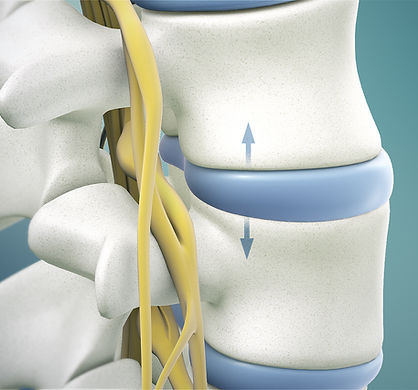Book an Appointment with the First & Only FNB Spine Surgeon of Bihar
Phone: +91 9113400257

Lumbar Surgeries
Lumbar surgery is performed to treat debilitating lower back spinal conditions (lumbar conditions).

Lumbar Microdiscectomy
This is needed when disabling sciatic pain from a ruptured lumbar disc has gone on for too long, usually a few weeks or more. The procedure entails a full anaesthetic, a small incision and a day or two in hospital.
The first step of surgery is to use a mobile X-ray machine to find the correct spinal level and then make a short incision in the back. An operating microscope is used to give a clear view of the involved nerve and gently remove the disc fragment from underneath it. Care is taken to make sure that there is no ongoing bleeding and the wound is sutured closed.
Local anaesthetic is injected into the wound during closure to help with pain relief.
The whole process usually takes from half to one hour.
The sciatic pain is often relieved straight away, but in some cases, may persist after surgery for a while. Sometimes numbness in the area of the previous pain is noticeable afterwards but will also usually fade with time.
Walking is encouraged soon after surgery, at the latest by the next day. People often go home within a day or two of surgery.
Lumbar Decompression
This is used to treat symptoms of spinal claudication or sciatica due to narrowing of the lumbar spinal canal causing nerve compression. The procedure entails a full anaesthetic, a small incision and a few days in hospital.
The first step of surgery is to use a mobile X-ray machine to find the correct spinal level and then make a short incision in the back. Magnifying operating loupes are used to give a clear view of the involved nerves and gently remove the bone and thickened ligaments that are compressing them. Care is taken to make sure that there is no ongoing bleeding and the wound is sutured.
Local anaesthetic is injected into the wound during closure to help with pain relief.
This process usually takes about one hour.
Afterwards there is generally some back pain, and pain-relieving medications are used. Walking is encouraged the next day. People often go home a few days after surgery.


Lumbar Disc Replacement
This surgery replaces one of the lumbar intervertebral discs from the front with a flexible prosthesis that maintains motion at the operated level. It is used to treat back pain due to disc degeneration in carefully selected cases. The incision is on the lower abdomen and a few days in hospital are needed.
Surgery is done through the lower abdomen and the front of the spine is revealed by retraction of abdominal contents and mobilising the large arteries and veins. Special circular retractors are used to maintain a clear view of the intervertebral disc in question. The disc is cut out and a specially designed prosthesis is inserted in its place. The device is secured by cutting narrow slots in the bone into which fins on the device fit tightly.
There is some abdominal pain afterwards and painkillers are used.
Walking from the first day after surgery is supported by the physiotherapy team. Time in hospital is a few days and from there most people go home.
